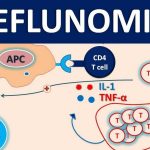
Contents
Klonopin (clonazepam) vs. Zoloft (sertraline)
Klonopin is an anti-anxiety medication used to treat panic disorder, seizures, and anxiety symptoms. It belongs to the benzodiazepine class of medications, which affect the neurotransmitter GABA in the brain. Excessive brain activity can lead to anxiety and psychiatric disorders.
QUESTION
What are the side effects of Klonopin and Zoloft?
Klonopin
Common side effects of Klonopin include sedation and dizziness. Other side effects may include depression, headache, weakness, sleep disturbance, and changes in sexual desire.
Serious side effects can include respiratory depression, fainting, enlarged liver, withdrawal symptoms, increased heart rate, low blood pressure, and blood disorders.
Antiepileptic medications can also increase the risk of suicidal thoughts and behavior.
Zoloft
Zoloft is an antidepressant that can increase the risk of suicidal thoughts and behavior in children and adolescents. Common side effects of Zoloft include sleepiness, nervousness, insomnia, dizziness, nausea, and tremor.
Serious side effects can include irregular heartbeats, allergic reactions, worsening of depression, serotonin syndrome, hyponatremia, abnormal bleeding, priapism, decreased liver function, suicidality, and activation of mania in patients with bipolar disorder.
Important side effects include irregular heartbeats, allergic reactions, and activation of mania in patients with bipolar disorder.
If Zoloft is discontinued abruptly, patients may experience side effects. Gradual dosage reduction is recommended.
What is the dosage of Klonopin and Zoloft?
Klonopin
The dosage of Klonopin is tailored to the patient’s needs. For seizures in adults, the initial dose is 1.5 mg daily in 3 divided doses. The maximum dose is 20 mg daily. For panic disorders, the initial dose is 0.25 mg twice daily.
Zoloft
The recommended dose of Zoloft is 25 to 200 mg once daily. Treatment of various disorders starts at 25 to 50 mg once daily and can be increased at weekly intervals until the desired response is achieved. The recommended dose for premenstrual dysphoric disorder is 50 to 150 mg daily or for 14 days before menstruation.
What drugs interact with Klonopin and Zoloft?
Klonopin
Klonopin can enhance the effects of drugs that slow brain processes, such as alcohol and narcotics, leading to increased sedation.
Zoloft
Zoloft should not be taken with monoamine oxidase inhibitors (MAOIs) or other drugs that increase serotonin in the brain, as it can lead to serious reactions. Cimetidine may increase Zoloft levels in the blood, while pimozide can affect electrical conduction in the heart. Warfarin levels should be monitored when starting or stopping Zoloft.
Are Klonopin and Zoloft safe to use while pregnant or breastfeeding?
Klonopin
Klonopin and other benzodiazepines should be avoided in the first trimester of pregnancy and during breastfeeding.
Zoloft
Use of Zoloft during the third trimester of pregnancy may have adverse effects on the newborn. Use during breastfeeding has not been adequately evaluated.
Summary
Klonopin and Zoloft are medications used to treat anxiety and panic disorders. Klonopin is a benzodiazepine, while Zoloft belongs to a class of drugs called selective serotonin reuptake inhibitors (SSRIs).


